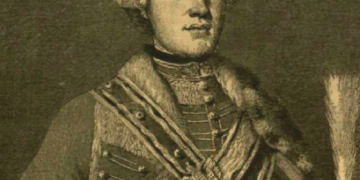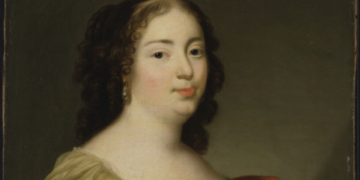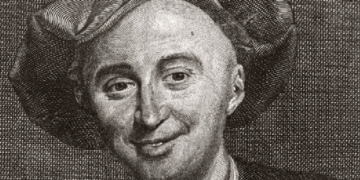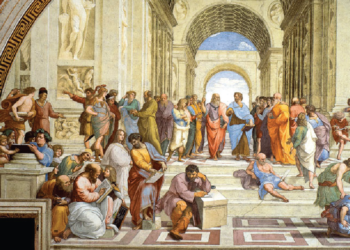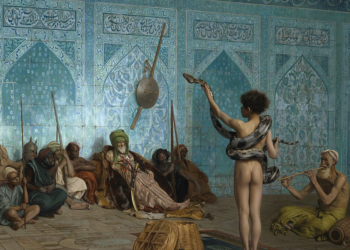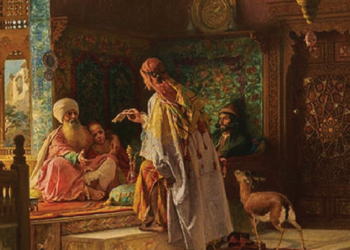Francisco de Rojas Zorrilla
1) His Biography
Francisco de Rojas Zorrilla was a significant figure in the Spanish Golden Age, born in 1607 in Toledo, Spain. Emerging in an era rich with literary and theatrical innovation, he was part of the flourishing cultural landscape that included giants such as Lope de Vega and Calderón de la Barca. Rojas Zorrilla’s upbringing in a noble family allowed him access to education and artistic circles that would shape his career as a playwright. While exact details about his early life remain somewhat scarce, it is clear that his exposure to the intellectual vibrancy of early 17th-century Spain played a crucial role in developing his dramatic sensibilities.
His career in the theatre began in earnest in the 1630s, a time when Spanish theatre was experiencing its golden moment, characterised by a blend of classical influences and innovative narrative forms. Rojas Zorrilla quickly distinguished himself by contributing a large number of comedias, a popular genre of Spanish drama that combined elements of tragedy, comedy, and romance. He wrote prolifically, and his works were well-received, marking him as one of the notable playwrights of his time. Unlike some of his contemporaries who focused more on lofty philosophical or religious themes, Rojas Zorrilla’s plays often centred around themes of love, honour, and social conflict, mirroring the concerns of the Spanish nobility.
Throughout his life, Rojas Zorrilla maintained connections with influential theatrical companies and literary figures, which helped him secure the staging and publication of his works. His style was marked by its clarity, elegance, and dramatic effectiveness, often using witty dialogue and well-constructed plots to engage audiences. His reputation was such that his plays were not only popular in Spain but also found audiences across Europe, being translated into several languages, a testament to their enduring appeal and universal themes.
Despite his success as a playwright, Rojas Zorrilla also had a military career, which was not uncommon among nobles of his time. He served as a soldier, and some biographers suggest that his military experiences may have informed certain aspects of his drama, especially the themes of honour and loyalty which permeate many of his works. This dual career—both literary and martial—reflects the complex identity of many Spanish Golden Age figures who straddled the worlds of letters and arms.
Francisco de Rojas Zorrilla’s life spanned a turbulent period in Spanish history, marked by political upheavals and the gradual decline of Spain as a European hegemon. Yet, despite the challenges of his era, his works capture the spirit and contradictions of 17th-century Spanish society. He died in 1648, leaving behind a legacy that would influence Spanish theatre well beyond his time. His death marked the end of a productive, though relatively brief, career during which he enriched the Spanish dramatic tradition.
In the centuries following his death, interest in Rojas Zorrilla’s plays has waxed and waned, but modern scholarship has increasingly recognised his contributions as vital to understanding the evolution of Spanish drama. His ability to balance popular appeal with literary craftsmanship places him among the important dramatists of the Spanish Golden Age. Today, he is studied not only for his theatrical innovation but also as a window into the social and cultural mores of his time.
2) Main Works
“Del rey abajo, ninguno” (No One Below the King)
This play explores themes of honour, social hierarchy, and justice. It tells the story of characters navigating the rigid class distinctions of 17th-century Spain, emphasising that honour is the true measure of a person, regardless of birth. The drama delves into the tensions between nobility and commoners, revealing how personal integrity can transcend social rank.
“Célida y el señor” (Célida and the Lord)
A romantic comedy featuring Célida, a clever and spirited young woman, and her interactions with a nobleman. The play examines issues of love, deception, and social conventions, with witty dialogue and a plot revolving around mistaken identities and the pursuit of genuine affection amid societal constraints.
“El divino calabrés” (The Divine Calabrian)
This work combines elements of comedy and drama as it follows the adventures of a charismatic character from Calabria who influences those around him with his charm and wit. The play tackles themes of fate, personal transformation, and the nature of virtue, all while maintaining a lively and engaging tone.
“El provincial” (The Provincial)
Focusing on the clash between provincial naivety and urban sophistication, this play centres on a young man from the countryside who comes to the city and encounters various social challenges. It highlights the contrast between rural innocence and city cunning, exploring the theme of identity and adaptation in a changing world.
“La traición busca el castigo” (Treason Seeks Punishment)
A tragedy that examines betrayal, loyalty, and the consequences of treachery. The narrative unfolds around political intrigue and personal vengeance, showcasing the moral dilemmas faced by characters torn between duty and passion. This play reflects the darker and more serious side of Rojas Zorrilla’s dramatic repertoire.
“Los áspides de Cleopatra” (The Aspes of Cleopatra)
This historical drama portrays the life and downfall of Cleopatra, using her story as a backdrop to explore themes of power, ambition, and tragic destiny. Rojas Zorrilla blends historical fact with dramatic fiction to create a powerful narrative about the costs of political manoeuvring and personal desire.
“El amo criado” (The Master Served)
A comedic piece that plays with social roles and reversals, where servants and masters find their positions unexpectedly switched. The play uses humour to critique social hierarchies and to investigate human nature, showing how power and identity can be fluid rather than fixed.
3) Main Themes
Honour and Social Hierarchy
One of the most pervasive themes in Rojas Zorrilla’s plays is honour, particularly how it intersects with social status. Unlike some contemporaries who idealised noble birth as the sole source of honour, Rojas Zorrilla often emphasised personal integrity as paramount, suggesting that honour transcends class distinctions. His plays dramatise conflicts where characters from different social strata confront questions of dignity, reputation, and justice. This focus reflects the broader Spanish cultural preoccupation with honour but also marks an original contribution by offering a more nuanced, sometimes critical view of rigid social hierarchies. Compared with Lope de Vega, who frequently celebrated noble heroism, Rojas Zorrilla’s treatment is more socially complex, allowing commoners or less privileged characters to assert their moral worth.
Love and Deception
Romantic entanglements in Rojas Zorrilla’s plays often involve disguises, mistaken identities, and strategic deception. Love is portrayed as a powerful, sometimes disruptive force that tests social conventions and individual character. However, rather than idealising romantic love as purely noble or transcendent, he frequently highlights its ambiguities and practical complications. This treatment situates his work within the tradition of Spanish comedia but also enriches it by probing the tensions between genuine affection and social performance. His comedies, such as “Célida y el señor,” explore how characters navigate love’s uncertainties, showing similarities with Calderón’s intricate love plots but with a distinctive blend of humour and realism.
The Fluidity of Social Roles
Rojas Zorrilla was interested in the instability and permeability of social identities, a theme expressed through plots where servants become masters or provincials confront urban sophistication. This fluidity challenges the fixed social order, inviting audiences to reflect on the artificiality of social distinctions. The use of role reversals and social masquerades in his comedies, such as in “El amo criado,” reveals a playful yet pointed critique of societal structures. Compared to other Golden Age dramatists who often reinforced hierarchical norms, Rojas Zorrilla’s nuanced approach anticipates later theatrical explorations of identity and class.
Loyalty and Betrayal
In his tragedies and more serious dramas, themes of loyalty and betrayal are central. These plays depict intense personal and political conflicts where allegiance is tested, and treachery leads to devastating consequences. The theme extends beyond individual relationships to encompass broader questions of political legitimacy and moral responsibility. For example, “La traición busca el castigo” dramatizes the destructive nature of betrayal, aligning with the somber moral tone typical of Spanish tragic drama but enriched by Rojas Zorrilla’s complex characterisations that avoid simple moral binaries.
Power and Ambition
Rojas Zorrilla’s historical dramas, like “Los áspides de Cleopatra,” explore the dynamics of power and ambition, particularly how these forces shape human destiny. His portrayal of political figures and rulers underscores the interplay between personal desires and public responsibilities. The tragedies often reveal the costs of unchecked ambition, including loss and ruin, reflecting Baroque preoccupations with the instability of worldly glory. This theme aligns him with Calderón and other contemporaries but also allows for a distinct psychological insight into characters’ motivations and vulnerabilities.
4) Zorrilla as a Playwright
Francisco de Rojas Zorrilla stands out as one of the most accomplished playwrights of Spain’s Golden Age, a period marked by extraordinary theatrical creativity and innovation. His work reflects both a mastery of the established conventions of the Spanish comedia and a distinctive voice that contributed significantly to the evolution of the genre. As a playwright, Rojas Zorrilla balanced tradition and originality, creating plays that combined entertainment with incisive social commentary, making his works resonate with contemporary audiences as well as modern readers.
One of the defining features of Rojas Zorrilla’s dramaturgy is his facility with plot construction. His plays are noted for their intricate yet coherent narratives, often involving complex twists, mistaken identities, and role reversals. Unlike some of his peers who favoured elaborate but sometimes convoluted plots, Rojas Zorrilla maintained clarity and momentum, ensuring that the dramatic tension was sustained without sacrificing comprehensibility. This skill in storytelling allowed him to explore themes such as honour, love, and social status in a manner that was engaging and accessible.
Moreover, Rojas Zorrilla exhibited a keen understanding of character psychology, crafting figures that were multidimensional and believable. His characters frequently grapple with internal conflicts, moral dilemmas, and social pressures, which lend his plays a depth that transcends mere theatrical spectacle. The interplay between characters is nuanced, with dialogue that reveals subtle shifts in allegiance, desire, and identity. This complexity enriched the emotional texture of his dramas, aligning him with other Golden Age greats like Calderón de la Barca, yet with his own distinctive style marked by wit and elegance.
Rojas Zorrilla’s versatility across genres is also noteworthy. He wrote both comedies and tragedies, demonstrating an ability to adapt his voice and themes to suit different dramatic modes. His comedies often employ humour, irony, and satire to critique social norms and human foibles, while his tragedies delve into weightier matters of loyalty, betrayal, and fate. This breadth allowed him to address a wide spectrum of human experience and to appeal to diverse audiences, from the courtly elite to popular theatre-goers.
Stylistically, Rojas Zorrilla’s language is characterised by clarity and refinement. He eschewed excessive ornamentation in favour of dialogue that was elegant but straightforward, enabling the drama to unfold with naturalism and pace. This linguistic approach distinguished him from some contemporaries who indulged in more florid or rhetorical expression. His verse and prose are crafted to enhance the theatrical effect, with rhythmic patterns and cadences that heighten emotional impact without overwhelming the audience.
Another significant aspect of Rojas Zorrilla’s legacy as a playwright lies in his influence beyond Spain. His plays were translated into various European languages, reflecting their universal appeal and the adaptability of his themes. The popularity of his works abroad contributed to the diffusion of Spanish Golden Age theatre throughout Europe and helped shape theatrical traditions beyond the Iberian Peninsula. This international reception underscores the enduring relevance of his dramaturgy.
Finally, Rojas Zorrilla’s contribution to Spanish theatre is not merely in the quantity of his output but in the quality and innovation of his works. He managed to modernise certain aspects of the Spanish comedia, integrating a more critical view of social hierarchies and a deeper psychological realism. His ability to combine entertainment with thoughtful reflection ensures that his plays remain important both as artistic achievements and as cultural documents of 17th-century Spain.
5) His Legacy
Francisco de Rojas Zorrilla’s legacy is firmly embedded in the rich tradition of Spanish Golden Age theatre, a period celebrated for its extraordinary literary and dramatic achievements. Although not as universally renowned as some of his contemporaries like Lope de Vega or Calderón de la Barca, Rojas Zorrilla nonetheless made enduring contributions that have ensured his place in the history of Spanish drama. His work helped to shape the trajectory of Spanish theatre both in his own time and for generations to come.
One of the key aspects of Rojas Zorrilla’s legacy is his mastery and refinement of the Spanish comedia form. He upheld the conventions of this genre—blending elements of tragedy and comedy, mixing serious themes with humour and romance—while also introducing greater psychological depth and social critique. This balance influenced later playwrights who sought to combine popular appeal with artistic sophistication. His emphasis on honour as a flexible and personal concept rather than a fixed social attribute paved the way for more nuanced explorations of identity and morality on the stage.
Rojas Zorrilla’s influence extended beyond Spain’s borders as well. Many of his plays were translated into French, Italian, and English during the 17th and 18th centuries, facilitating the spread of Spanish dramatic techniques and themes across Europe. This helped to establish the Spanish Golden Age as a major influence on the development of European theatre. In particular, his intricate plots and complex characters informed the work of playwrights abroad who admired the psychological realism and social commentary present in his plays.
In Spain, his works continued to be performed long after his death, maintaining their popularity through the Baroque period and beyond. Theatre companies appreciated his well-crafted dialogue and the versatility of his plays, which could appeal to a variety of audiences. The adaptability of his comedias made them suitable for different theatrical settings, contributing to their endurance. His ability to entertain while provoking reflection ensured that his plays remained relevant amidst changing tastes and political circumstances.
Academically, Rojas Zorrilla has increasingly attracted scholarly attention as critics seek to reassess the diversity of the Spanish Golden Age beyond its most famous figures. Modern literary historians and theatre scholars value his plays for their sophisticated treatment of social and psychological themes, recognising his role in advancing the dramatic art form. His works offer valuable insights into 17th-century Spanish society, particularly in their exploration of honour, love, and power dynamics.
Furthermore, his legacy is visible in contemporary theatre revivals and adaptations. Although less frequently staged than the classics by Lope or Calderón, selected plays by Rojas Zorrilla continue to appear in festivals and repertory companies devoted to Golden Age drama. These modern performances highlight the timelessness of his themes and the enduring appeal of his storytelling, introducing his work to new audiences and reaffirming his place in the theatrical canon.


